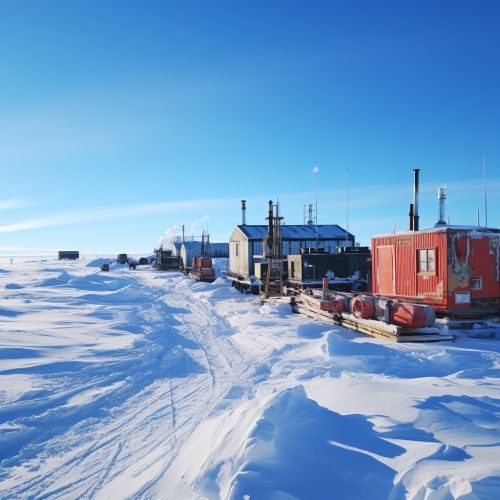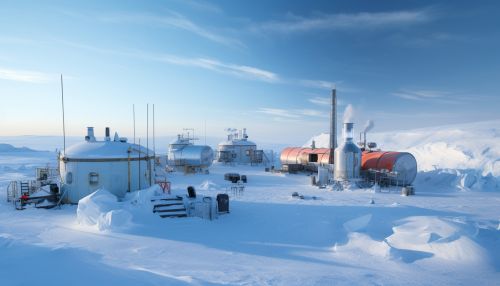Geography of Antarctica
Geography of Antarctica
Antarctica, the southernmost continent and site of the South Pole, is a virtually uninhabited, ice-covered landmass. It is the coldest, driest, windiest, and has the highest average elevation of all the continents. Antarctica is considered a desert, with annual precipitation of only 200 mm (8 inches) along the coast and far less inland. The temperature in Antarctica has reached −89.2 °C (−128.6 °F), though the average for the third quarter (the coldest part of the year) is −63 °C (−81 °F).
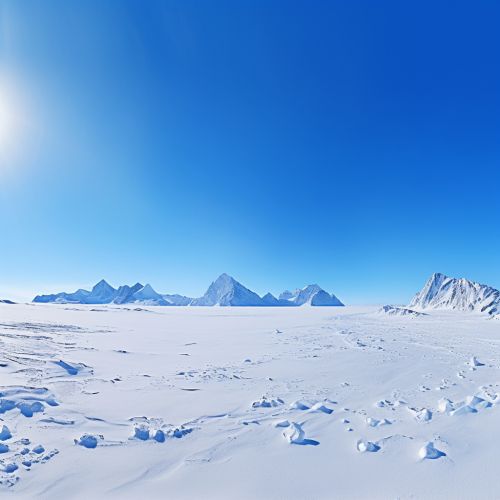
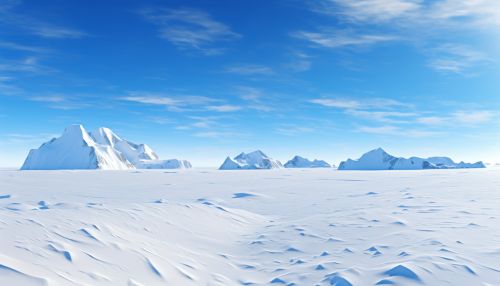
Physical Geography
Antarctica is the fifth largest among the world's seven continents. It is located in the Antarctic region of the Southern Hemisphere, almost entirely south of the Antarctic Circle, and is surrounded by the Southern Ocean. About 98% of Antarctica is covered by ice that averages 1.9 km (1.2 mi; 6,200 ft) in thickness, which extends to all but the northernmost reaches of the Antarctic Peninsula.
Topography
Antarctica's two main topographical regions are the East Antarctic Plateau and West Antarctic. The East Antarctic Plateau is a high, flat, windswept expanse where temperatures can drop to below −80 °C (−112 °F). The highest point on Antarctica, located in the Ellsworth Mountains, is the Vinson Massif, which reaches 4,892 meters (16,050 feet) above sea level.
West Antarctica is mostly covered by the West Antarctic Ice Sheet. The sheet has been of recent concern because of the real, if small, possibility of its collapse. If the sheet were to break down, ocean levels would rise by several metres in a relatively geologically short period of time, perhaps a matter of centuries.
Climate
The climate of Antarctica is the coldest on Earth. Antarctica's lowest air temperature record, which was previously −89.2 °C (−128.6 °F) at Vostok Station, was surpassed on 10 August 2010 when satellite observations showed a surface temperature of −93.2 °C (−135.8 °F) at , along a ridge between Dome Argus and Dome Fuji, at 3,900 m (12,800 ft) elevation.
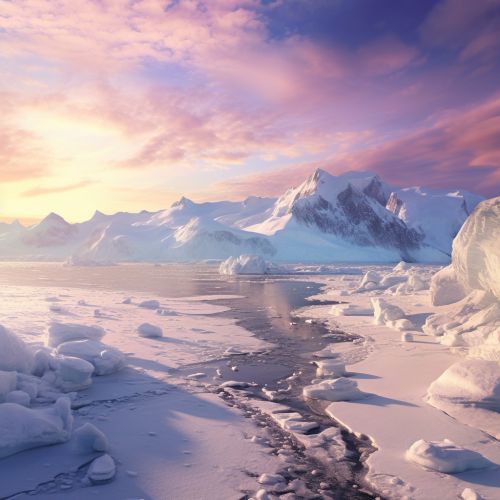
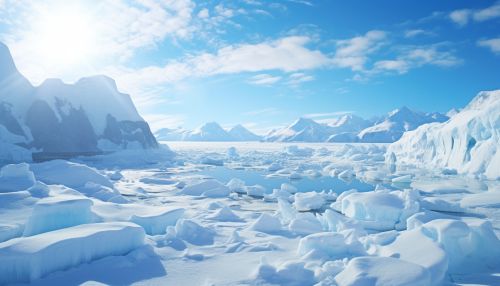
Geology
The geological history of Antarctica covers the geological development of the continent through the Archean, Proterozoic and Phanerozoic eons. Antarctica was not always cold, dry and covered in ice sheets. At a number of points in its long history, it was farther north, experienced a tropical or temperate climate, was covered in forests, and inhabited by various ancient life forms.
Plate Tectonics
Antarctica consists of two major regions: West Antarctica and East Antarctica. West Antarctica is underlain by the West Antarctic Rift, whereas East Antarctica is underlain by a craton, a stable section of the Earth's lithosphere that has survived the merging and splitting of continents.
Volcanism
There are a number of known active volcanoes in Antarctica, including Mount Erebus, which is the southernmost active volcano on Earth and one of the few in the world with a permanent lava lake. Other volcanoes are found on James Ross Island and Deception Island, which are also noted for their unique volcanic activities.
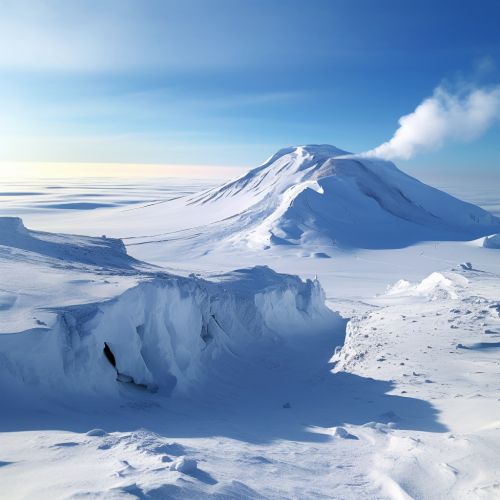
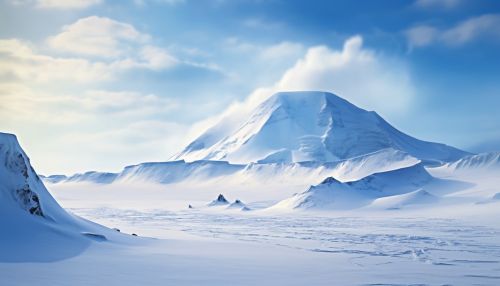
Flora and Fauna
Antarctica's harsh environment limits the existence of flora and fauna in the continent. However, life in Antarctica persistently finds ways to survive. The flora of the continent largely consists of lichens, mosses, and algae that are adapted to its harsh conditions.
Antarctica is home to a variety of species of penguins, seals and seabirds that make their home in this freezing environment. Many of these animals are uniquely adapted to survive in the extreme conditions of Antarctica.
Penguins
Several species of penguins inhabit Antarctica and the surrounding islands, including the Emperor Penguin, which is the only penguin species that breeds during the harsh Antarctic winter. Other species include the Adélie Penguin, Chinstrap Penguin, and Gentoo Penguin.
Seals
Antarctica is also home to several species of seals, including the Weddell Seal, Crabeater Seal, and Leopard Seal. These seals are well-adapted to the Antarctic environment, with thick layers of blubber for insulation and streamlined bodies for swimming in the cold waters.
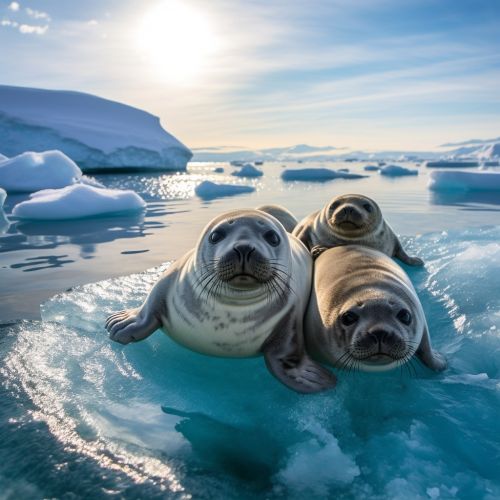
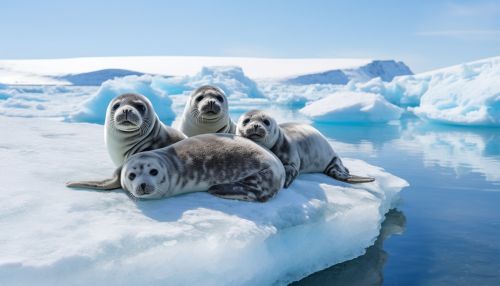
Human Presence
The harsh conditions of Antarctica have made it a difficult place for humans to inhabit. However, there are a number of research stations and field camps that are staffed by personnel from various countries, who conduct scientific research on the continent.
Research Stations
There are approximately 70 research stations in Antarctica, staffed by scientists from 30 countries. These stations include the Amundsen-Scott South Pole Station, operated by the United States, and the McMurdo Station, which is the largest research station in Antarctica.
Treaty System
The Antarctic Treaty, signed in 1959 by 12 countries, prohibits military activity, mineral mining, nuclear testing, and nuclear waste disposal in Antarctica. It also supports scientific research and protects the continent's ecozone.
